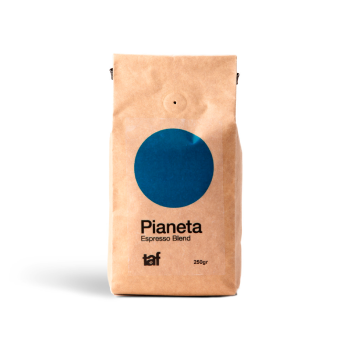The Fascinating History of Coffee: From Discovery to Modern Day
Posted by Cascara UK on August 8, 2024
Posted by Cascara UK on August 8, 2024

Coffee is more than just a beloved beverage; it’s a cultural phenomenon with a rich history that spans centuries and continents. From its legendary discovery to its evolution into one of the world’s most popular drinks, coffee has a story as complex and intriguing as its flavour. Let’s take a journey through time to explore how coffee was discovered and how it has developed over the years.
The story of coffee’s discovery begins with a legend that dates back to the 9th century in Ethiopia. According to folklore, a young goat herder named Kaldi noticed that his goats became unusually energetic after eating the red cherries from a certain tree. Curious about this effect, Kaldi tried the cherries himself and experienced a similar burst of energy. He shared his findings with a local monastery, where the monks began to use the cherries to make a drink that helped them stay awake during long hours of prayer. This drink, made from the coffee cherries, is believed to be the earliest form of coffee as we know it today.
Coffee’s energizing effects quickly gained popularity beyond the Ethiopian highlands. By the 15th century, coffee had made its way to the Arabian Peninsula, where it became an integral part of Islamic culture. The drink was embraced by scholars and religious leaders who valued its ability to keep them alert during their studies and prayers. It was in Yemen where coffee was first cultivated and roasted, transforming the raw cherries into the beverage we recognize today. The Arabian coffeehouses, known as “qahveh khaneh,” became centres of social activity, intellectual exchange, and political discourse. These establishments, which spread throughout the Middle East, were known as “schools of the wise” because of the stimulating discussions that took place within their walls. The word “coffee” itself is believed to have been derived from “qahwa,” the Arabic term for the drink.
By the 17th century, coffee had made its way to Europe, thanks to trade routes between the Middle East and the Mediterranean. Initially, coffee faced scepticism and even resistance from some Europeans, who associated it with the Ottoman Empire and viewed it as a “Muslim drink.” However, coffee’s popularity soon surged, particularly in places like Italy, France, and England. Coffeehouses began to spring up across Europe, much like they had in the Arab world. These establishments quickly became hubs of social interaction, attracting artists, intellectuals, and business people. In England, coffeehouses were nicknamed “penny universities” because, for the price of a penny, one could buy a cup of coffee and engage in lively, informed conversation. The global expansion of coffee truly began in the 18th century, as European colonization introduced the drink to new regions. Coffee plants were transported to the tropical climates of the Caribbean, South America, and Southeast Asia, where they thrived. Brazil, in particular, emerged as a dominant coffee producer, a status it still holds today. As coffee plantations spread, so did the coffee culture. Each region began to develop its own unique traditions and methods of brewing coffee, leading to a rich diversity of coffee experiences around the world. Italian espresso, Turkish coffee, and French café au lait are just a few examples of how coffee has been adapted to different tastes and preferences.
In the 20th century, coffee became an even more integral part of daily life, particularly in the West. The invention of instant coffee in the early 1900s made it easier and faster to enjoy a cup, while the post-World War II era saw a boom in coffee consumption in the United States. The rise of coffee giants like Starbucks in the late 20th century brought coffee culture to the mainstream, transforming coffee from a simple beverage into a lifestyle choice. Today, coffee is a global industry worth billions of dollars, with countless varieties, brewing methods, and coffee-based beverages available. From artisanal single-origin beans to innovative brewing techniques like pour-over and cold brew, coffee continues to evolve and captivate the world.
From its legendary discovery in the Ethiopian highlands to its modern-day status as a global staple, coffee has had an extraordinary journey. It has crossed continents, fuelled revolutions, and inspired countless innovations. Whether enjoyed in a bustling café, shared among friends, or savoured in the quiet of the morning, coffee remains a timeless symbol of connection, creativity, and comfort. As we sip our daily cup, it’s fascinating to reflect on the long and storied history of coffee—a history that continues to unfold with every brew.
